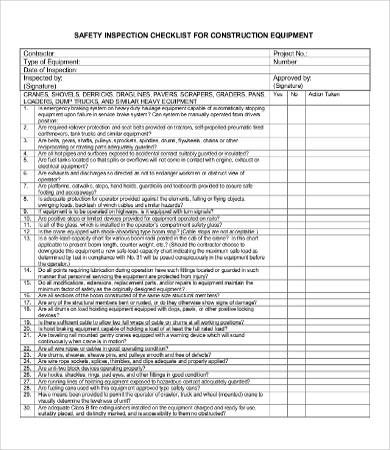As a construction company, ensuring that your equipment is properly maintained is essential for the efficiency and safety of your operations. Regular maintenance not only extends the lifespan of your equipment but also reduces the risk of costly breakdowns and repairs. In this article, we will provide you with a complete checklist for maintaining your construction equipment.
1. Daily Inspections
Start each day by conducting a visual inspection of your equipment. Check for any signs of damage, leaks, or loose parts. Make sure all fluid levels are at the recommended levels and that tire pressure is correct. Address any issues immediately before using the equipment.
2. Regular Cleaning
Keeping your equipment clean is not just for aesthetics. Dirt and debris can cause wear and tear on your equipment over time. Regularly clean your equipment, including removing built-up mud and grime, to prevent corrosion and other damage.
3. Lubrication
Proper lubrication is critical for the smooth operation of your equipment. Make sure to grease all moving parts according to the manufacturer’s recommendations. Over time, parts can wear down and require more frequent lubrication, so be sure to check and adjust as needed.
4. Filter Changes
Filters help to keep dirt and contaminants out of your equipment’s engine and other sensitive components. Check and replace filters regularly to ensure optimal performance. This includes air, fuel, and hydraulic filters.
5. Electrical System Inspection
Inspect the electrical system of your equipment regularly to ensure that all components are functioning properly. Check for any loose connections, frayed wires, or signs of damage. Test the battery and charging system to prevent unexpected downtime.
6. Tire Maintenance
Tires are a crucial part of your construction equipment, as they support the weight of the machinery and provide traction. Inspect tires for wear, damage, and proper inflation. Rotate tires regularly to ensure even wear and replace them when necessary.
7. Brake Inspection
Brakes are essential for the safety of your equipment and operators. Regularly check brake pads, drums, and hydraulic systems for wear and proper function. Address any issues immediately to prevent accidents on the job site.
8. Fluid Checks
Regularly check all fluid levels, including engine oil, coolant, hydraulic fluid, and transmission fluid. Make sure levels are within the recommended range and top up as needed. Contaminated or low fluids can cause serious damage to your equipment.
9. Scheduled Maintenance
Follow the manufacturer’s recommended maintenance schedule for your equipment. This includes regular inspections, fluid changes, filter replacements, and other preventive measures. Keeping up with scheduled maintenance can save you time and money in the long run.
10. Training and Education
Ensure that your operators are properly trained in the maintenance of your construction equipment. Provide ongoing education and training to keep them up to date on best practices and safety procedures. Well-trained operators can help prevent costly breakdowns and accidents.
By following this complete checklist for construction equipment maintenance, you can keep your equipment in top condition and ensure the safety and efficiency of your operations. Remember, regular maintenance is key to prolonging the lifespan of your equipment and avoiding costly repairs. Take the time to inspect, clean, and maintain your construction equipment regularly, and you will see the benefits in the long run.
